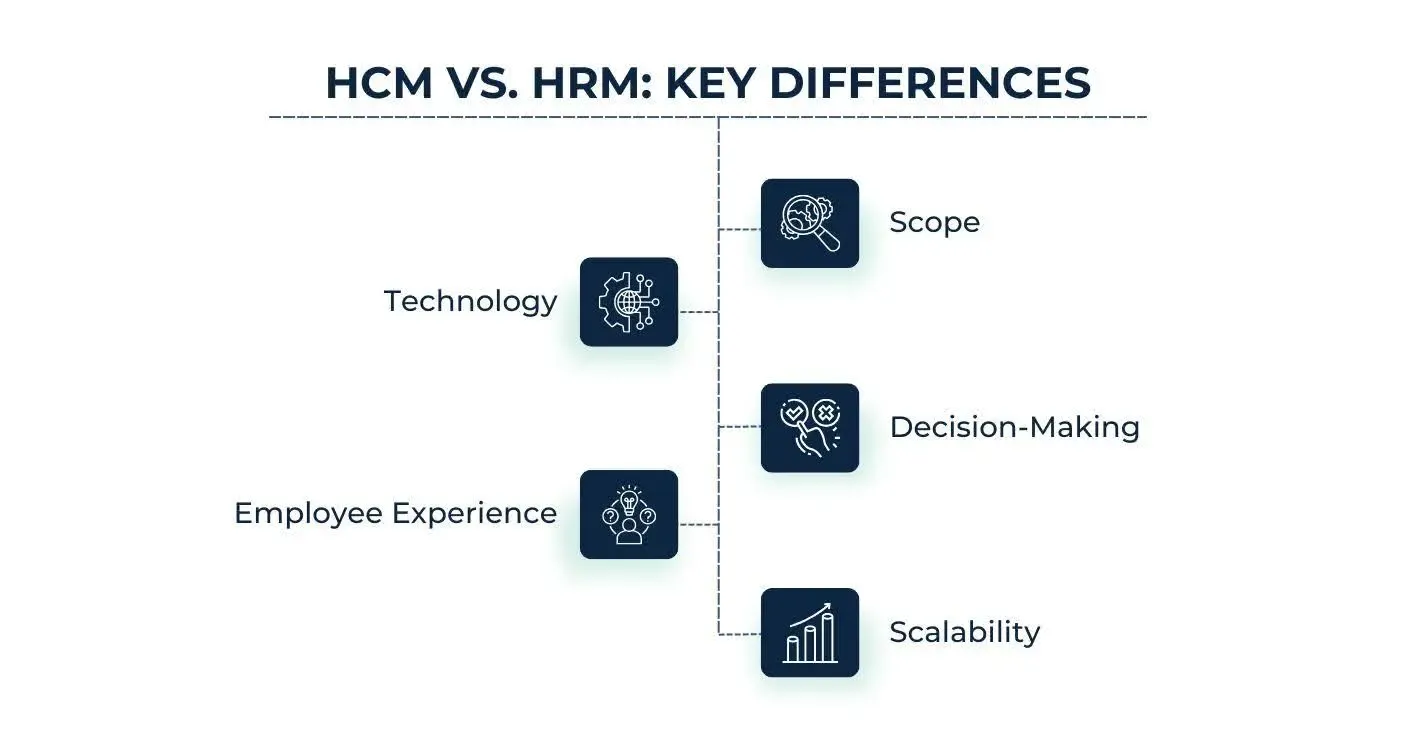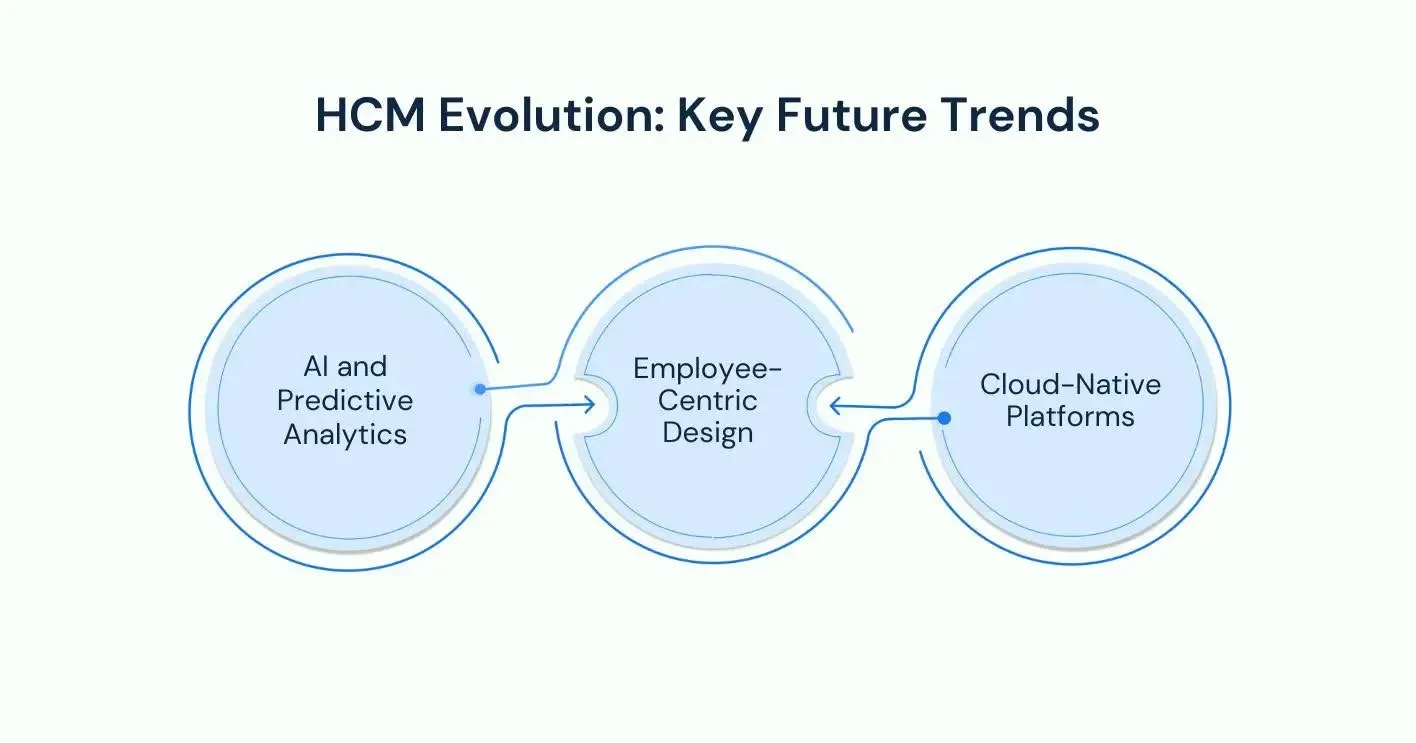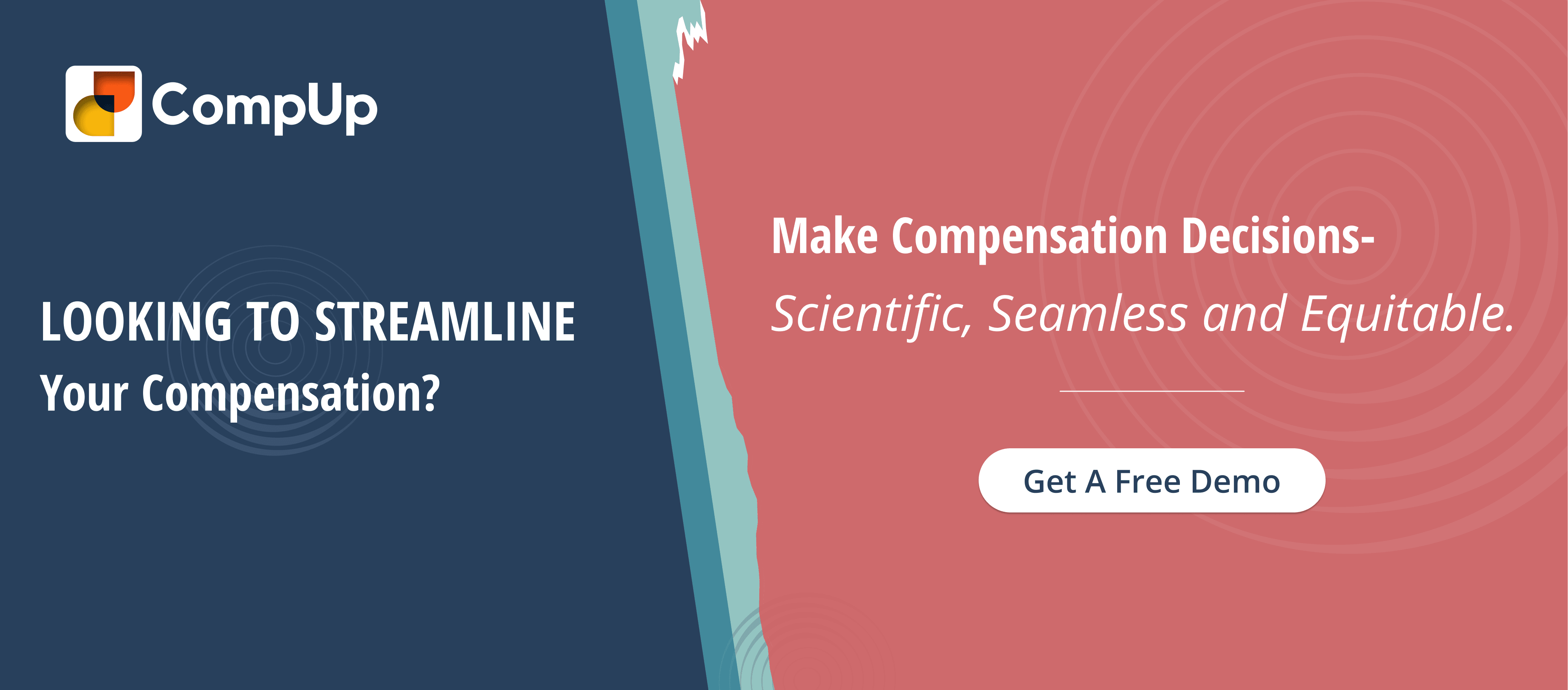
Human Capital Management (HCM) has become a strategic priority for organizations aiming to optimize talent, increase productivity, and stay competitive. As businesses increasingly rely on digital tools to manage their workforce, the global HCM market is projected to grow from $34.37 billion in 2025 to $75.45 billion by 2034, reflecting a compound annual growth rate (CAGR) of 9.13%.
The adoption of cloud-based platforms, AI-powered recruitment, and data-driven HR strategies drives this surge. But what is human capital management, and why has it become so critical in modern HR practices? In this blog, we will explore its meaning, significance, and how it is transforming the way companies manage their most valuable asset: people.
Key Takeaways
Human Capital Management is a comprehensive approach to managing an organization’s workforce as a key asset. It extends beyond traditional HR functions by integrating processes like talent acquisition, performance management, learning and development, and compensation planning into a unified system.
At its core, HCM enables HR leaders to align workforce strategy with organizational goals by:
This shift from transactional HR to strategic workforce management positions HCM as a critical driver of organizational agility and long-term success. With a clear understanding of human capital management, let us now look at how HCM software brings these concepts to life.
Suggested Read: How Equity Compensation Works? A Guide for Employees
Human Capital Management (HCM) software is an integrated suite of tools designed to help organizations manage their workforce more effectively. It goes beyond basic HR functions by streamlining core processes such as recruitment, onboarding, payroll, benefits administration, performance management, and learning and development.
Modern HCM software also incorporates advanced features like workforce analytics, compliance management, and self-service portals for employees and managers. This enables HR teams to make data-driven decisions, improve operational efficiency, and enhance employee engagement across the entire lifecycle.
By centralizing these functions in a single platform, HCM software supports businesses in aligning their talent strategy with organizational goals and scaling workforce management as they grow.
To understand why HCM is more than an HR software upgrade, it helps to look closely at its core components. This is explained in detail in the following section.
A modern HCM system consolidates multiple HR functions into one cohesive platform. Here are its key components:
Automates recruitment workflows, from job posting and applicant tracking to offer management and onboarding. HCM guarantees a faultless candidate-to-employee transition and supports employer branding.
HCM covers time and attendance tracking, leave management, shift scheduling, and labor cost monitoring. Integration with payroll systems ensures accurate wage calculations and compliance with labor regulations.
This component enables organizations to set clear performance goals, provide continuous feedback, and conduct structured performance reviews. It supports succession planning by identifying high-potential employees and preparing them for leadership roles through targeted development programs.
HCM systems provide tools to design, deliver, and track training programs that address current and future skill gaps. HR leaders can monitor employee progress and ensure learning initiatives are directly tied to organizational needs and workforce planning.
This module centralizes the management of salary structures, variable incentives, and employee benefits in a single platform. It promotes equitable pay practices by ensuring consistency across roles and locations, supported by integrated benchmarking data.
Advanced analytics tools deliver insights into workforce trends, such as turnover rates, productivity metrics, and compensation benchmarks. Real-time reporting supports compliance and provides leadership with actionable information for strategic planning.
While the core components of Human Capital Management (HCM) establish the structure, their impact is fully realized through the tangible outcomes they deliver. The following section explores these organizational benefits in detail.

CompUp Webinars | Deep Dive into Appraisal Season
Gain expert insights on appraisal season with Joel Sebastian (Esper.io), Anuj Vadehra (Lenskart), and Aman Gupta (Mobile Premier League). This 96-minute session explores compensation data challenges and shares actionable best practices for effective appraisal planning.
HCM systems create a foundation for strategic workforce planning and organizational growth. It drives measurable outcomes by connecting workforce data, processes, and goals in a unified framework. Key benefits include:
To see why Human Capital Management is redefining HR, it helps to compare it with traditional HR practices. The differences are clear across focus, technology, and outcomes, as explained in the following section.

Human Capital Management and traditional Human Resource Management (HRM) may seem similar, but their approaches to workforce management are fundamentally different. HCM expands the HR function from an administrative support role into a strategic driver of organizational success.
By moving from traditional HR to an HCM approach, organizations gain the agility, insight, and scalability required to meet modern workforce challenges.
Suggested Read: Understanding What 75th Percentile Means in Salary Compensation
Human Capital Management (HCM) software is an integrated platform that manages the entire employee lifecycle. It replaces fragmented HR tools with a centralized system, improving efficiency, compliance, and decision-making.
These are a few reasons to consider HCM software for your organization:
Human Capital Management software consolidates multiple HR functions, including recruitment, payroll, benefits administration, and performance management, into a single platform. This integration eliminates redundant processes and reduces data silos, allowing HR teams to access accurate, real-time workforce information. Centralization also improves operational efficiency and provides better visibility for strategic planning.
With embedded analytics and reporting tools, HCM systems equip HR professionals to make informed, strategic decisions. Predictive analytics support workforce planning, succession management, and talent retention by identifying trends and risk areas.
Regulatory landscapes are complex and constantly changing. HCM software automates updates for tax laws, labor codes, and industry regulations, ensuring organizational compliance without manual intervention. This reduces the risk of penalties, audits, or litigation while giving HR leaders confidence that processes align with legal requirements across multiple jurisdictions.
HCM platforms facilitate employees through self-service portals that allow them to access pay slips, manage leave, and update personal details independently. This transparency creates trust and reduces administrative burden on HR teams. Personalized communication also contributes to higher engagement and improved retention across the organization.
HCM software provides scalable solutions that adapt to increasing headcounts, multi-location operations, and diverse employment types. This flexibility ensures HR teams maintain efficiency and effectiveness even during rapid expansion or organizational restructuring.
The right HCM software allows HR leaders to focus on strategic initiatives rather than being constrained by administrative tasks.
The following section outlines key factors HR teams should consider to ensure they choose a solution that aligns with organizational goals and workforce complexity.
Selecting an HCM system is a strategic decision that impacts your organization’s ability to manage its workforce efficiently and scale effectively. HR leaders must evaluate solutions against organizational needs, workforce complexity, and long-term growth objectives.
While choosing the right HCM system addresses your current workforce needs, staying ahead requires anticipating how these solutions will grow. Even the best HCM systems are not without hurdles. Understanding these challenges can help you plan better and maximize your investment.
Suggested Read: Top PayScale Alternatives and Competitors in 2025
While Human Capital Management systems simplify HR processes, they come with their own set of challenges. Recognizing these issues and implementing solutions can help organizations maximize the value of their HCM investments.
Disparate HR, payroll, and ERP systems often fail to communicate effectively, creating data silos and inconsistencies across departments. This fragmentation leads to duplicate entries, reporting errors, and a lack of real-time insights. It also slows down decision-making for HR leaders relying on accurate workforce information.
Solution: Choose HCM software with robust integration capabilities and APIs to unify data across platforms seamlessly.
HCM systems store sensitive employee details, from salary data to performance records. Without strong security protocols, organizations risk breaches that could result in financial penalties and reputational damage.
Solution: Opt for HCM platforms with built-in compliance tools and enterprise-grade security measures.
Employees and managers are often hesitant to adopt new systems, especially if they are comfortable with existing processes. Resistance can stem from fear of technology, lack of understanding about the system’s benefits, or inadequate training. Poor adoption rates ultimately hinder the ROI of an HCM implementation.
Solution: Provide comprehensive onboarding, training, and continuous support to encourage adoption.
As organizations grow across regions and add diverse workforce structures, legacy HCM systems often fail to keep up. HR teams face difficulties managing complex pay structures, multi-country compliance, and increasing headcount without system bottlenecks.
Solution: Select scalable HCM solutions that support multi-country operations and dynamic organizational structures.
Today’s HR functions depend on insights to make strategic decisions, but basic HCM platforms may lack predictive analytics or customizable dashboards. This shortfall prevents HR teams from identifying trends, tracking engagement levels, and aligning workforce planning with business objectives.
Solution: Invest in HCM systems offering predictive analytics and customizable dashboards for actionable insights.
While these challenges highlight the complexities of implementing HCM systems, they also underscore the importance of innovation. As technology advances, the future of Human Capital Management promises solutions that are smarter and more adaptive.

Human Capital Management is growing rapidly as organizations adapt to dynamic workforce needs and technological advancements. Future HCM systems will go beyond automation, using novel technologies to drive strategic outcomes.
Key trends shaping the future include:
Staying ahead of these trends will help HR leaders position their organizations for resilience and growth in an increasingly competitive talent landscape. This is where CompUp stands out, offering a comprehensive suite of solutions designed to meet modern workforce management needs.
CompUp enables organizations to advance Human Capital Management by unifying core HR functions with advanced automation and analytics. Designed for modern enterprises, it facilitates compensation planning, ensures equity, and supports data-driven workforce strategies within a single platform.
Key services include:
CompUp automates annual increments, promotions, and salary adjustments, enabling equitable pay structures across the organization. Its centralized view of compensation bands allows HR leaders to visualize employee positioning and align offers with internal benchmarks. With built-in budget simulation tools, this compensation management software enables more precise and strategic financial planning.
The pay transparency feature simplifies the creation and communication of internal compensation structures. HR teams can show employees how their pay aligns with company policies and market trends, reinforcing trust and regulatory compliance. It also supports clear workflows for managers to discuss salary structures confidently during performance reviews.
CompUp identifies disparities in pay across roles, genders, and locations by analyzing real-time data. HR leaders can use actionable insights to correct gaps and ensure fair compensation practices that stand up to external audits. This proactive approach helps organizations strengthen DE&I (Diversity, Equity, and Inclusion) initiatives.
With Hireshot, HR teams can design competitive and equitable offers for new hires while engaging candidates through a digital offer experience. Intelligent tools predict candidate drop-off risks and provide personalized onboarding workflows. With Digital Offer Experience and Rewards Statement, organizations can engage employees from onboarding through retention, creating a transparent and equitable workplace culture.
Stay competitive with real-time market data on pay trends across roles and geographies. CompUp’s benchmarking tools enable HR leaders to make informed compensation decisions that attract and retain top talent. Integrated analytics also support workforce planning and budget alignment with industry standards.
By integrating these capabilities, CompUp transforms how organizations approach Human Capital Management. It helps HR leaders simplify complex processes and ensure equitable and competitive compensation.
Human Capital Management has evolved from being an administrative function to a strategic driver of organizational success. Having answered “what is human capital management?” in this blog, it is time to consider how the right HCM software can drive measurable impact for your organization.
CompUp delivers by offering a comprehensive suite of solutions tailored to modern HCM needs. Tools like Budget Simulation enable precise financial planning for rewards allocation, while Manager Execution enables leaders to make informed decisions backed by real-time employee data.
Take the next step toward transforming your Human Capital Management strategy. Schedule a demo today to discover how CompUp can help your organization optimize HR operations, reward fairly, and build a future-ready workforce.
1. What is human capital management?
Human Capital Management (HCM) refers to the comprehensive set of practices, systems, and tools organizations use to recruit, manage, develop, and optimize their workforce for maximum organizational performance and alignment with business goals.
2. What do you mean by HCM management?
HCM management involves using integrated technologies and processes to handle core HR functions like payroll, performance, learning, and workforce analytics. It focuses on strategic workforce planning to enhance employee productivity and organizational success.
3. What is human capital in simple words?
Human capital means the collective skills, knowledge, and experience employees bring to an organization. It is an asset that drives innovation, efficiency, and business growth when effectively developed and managed.
4. What is a human capital management goal based on?
An HCM goal is based on aligning workforce strategies with organizational objectives. It aims to optimize talent acquisition, development, and retention while ensuring compliance, operational efficiency, and a positive employee experience across the lifecycle.

Customer Success Manager
Driven with the aim of becoming a valuable subject matter expert in the world of Total Rewards to be able to deliver exceptional customer experiences.
Revolutionizing Pay Strategies: Don't Miss Our Latest Blogs on Compensation Benchmarking